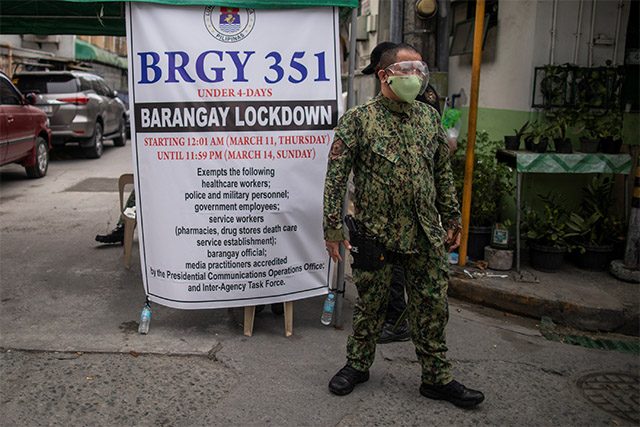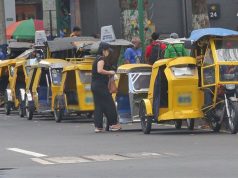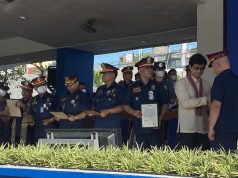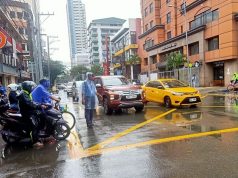
Safety concerns were raised online over the pending implementation of the granular lockdowns in Metro Manila.
In the final guidelines released by the Inter-Agency Task Force for the Management of Emerging Infectious Diseases (IATF-EID), the region would be placed under the new system called “Alert Levels System for COVID-19 Response” wherein smaller areas will be cordoned off depending on the status set by the local government unit.
It would be implemented from Sept. 16 to 30, 2021.
ICYMI: The IATF released guidelines on the pilot implementation of the Alert Level Systems for COVID-19 Response in Metro Manila.
These will be implemented starting Sept. 16. | via @jsmalasig
📷: Presidential Communications Operations Office via Facebook pic.twitter.com/OJVKnhvaWC
— Interaksyon (@interaksyon) September 14, 2021
Alert level vs granular lockdowns
In part 1 of the IATF guidelines, the Department of Health will be the one to identify the alert system in a pilot area depending on the data the LGU submitted to them.
This data included the COVID-19 vaccination rate and transmission rate.
There are four alert-level systems. Here are the classifications:
Alert Level 1: Case transmission is low and decreasing
Alert Level 2: Case transmission is low and decreasing, but total bed utilization rate and intensive care unit admission are increasing
Alert Level 3: Case counts are high and increasing
Alert Level 4: Case counts are high and alarming with bed utilization rate and ICU rate at critical levels
The Bureau of Communications Services released an infographic on the protocols surrounding each alert level.
This is different from the policy on granular lockdowns defined as a “micro-level quarantine for areas identified as ‘critical zones’ for the local government unit which may be declared regardless of alert level.”
In part II of the guidelines, it was stated that the authority to declare the granular lockdowns shall be given to the city or municipal mayors and the concurrence of the Regional Inter-Agency Task Force (RIATF).
The duration of the granular lockdown imposed at an area is 14 days.
Concerns about the new measures
The confusing rules of the government’s new quarantine system caused alarm and confusion among some social media users.
Some online users worried if there will be enough advanced notice for the granular lockdown for the workers who needed to leave their homes for their jobs.
“May lead time naman siguro to announce kung anong areas ang naka-granular lockdown no? Paano yung mga pumapasok sa trabaho, ibig sabihin ba nyan either di na sila papasok or hindi na makakauwi until lifted na lockdown? Paano? Please explain!” one Twitter user said.
“What about parents leaving to go to work. Paano kung naabutan sila ng lockdown habana nasa labas ng barangay? Paano yung mga bata na naiwan? Pansin ko lang na napaka-unrealistic ng proposals,” another user wrote.
Others inquired about what will happen to those who needed to go outside for brief errands.
“Pano bumili ka lang sa sari sari store tas pag balik mo lockdown na ung area? Ganun? San ka matutulog, pano damit, etc?” one Twitter user said.
“Kaya sa mga lalabas…dala kayo maleta mga damit at gamit. Banig kumot kulambo lalo kpag may bibilhin kayo sa tindahan.. para ready kapag may sinumpong ng lockdown,” another user said.
Another online user also argued that such protocol might only discourage Filipinos from taking COVID-19 test.
“I think what is worse about this very, very stupid idea is that you will simply ENCOURAGE people not to report their symptoms out of fear and shame that the whole street might be locked down without notice,” the user said.
Last week, Vice President Leni Robredo and other health workers called for ramped-up testing, tracing and isolation before trying out the granular lockdowns in the region, which still has the highest positivity rate of COVID-19 cases in the country.
READ: Robredo joins calls for ramped-up testing, contact tracing amid pending granular lockdowns









